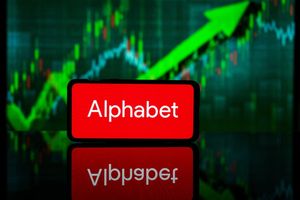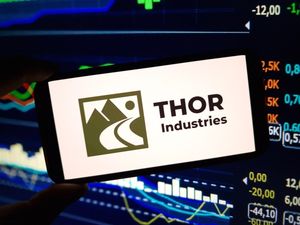
A monumental breakthrough in archaeological research, powered by cutting-edge Artificial Intelligence (AI), has achieved what over two centuries of human endeavor could not: the decipherment of the carbonized Herculaneum scrolls. These ancient papyrus rolls, buried and preserved by the catastrophic eruption of Mount Vesuvius in 79 CE, have long been an impenetrable enigma, their fragile, blackened forms resisting every attempt at physical unwrapping. Within a mere six months, an international competition leveraging advanced AI algorithms successfully revealed significant portions of their hidden Greek text, effectively unlocking a lost library from antiquity and ushering in a new era for historical research.
This rapid decipherment represents a paradigm shift in how humanity can access and understand its past. The successful application of AI to such a complex and delicate archaeological challenge demonstrates the technology's profound potential beyond traditional tech sectors, offering a beacon of hope for countless other unreadable ancient texts and artifacts worldwide. The implications are vast, promising to rewrite chapters of ancient history, philosophy, and literature that have been lost to time, and fundamentally altering the methodologies of archaeological and classical studies.
The Vesuvius Challenge: A Digital Key to an Ancient Library
The mystery of the Herculaneum scrolls began in the 18th century with their discovery in a grand villa, believed to be the library of Julius Caesar's father-in-law, in the Roman city of Herculaneum. The eruption of Mount Vesuvius had carbonized the scrolls, turning them into brittle, charcoal-like cylinders. For over 275 years, these 800-plus scrolls represented a tantalizing, yet frustrating, treasure trove of knowledge. Any physical attempt to unroll them invariably led to their destruction, leaving classicists and archaeologists to ponder their contents in vain.
The turning point arrived in March 2023 with the launch of the "Vesuvius Challenge," an audacious international competition spearheaded by computer scientist Brent Seales of the University of Kentucky, in collaboration with entrepreneurs Nat Friedman and Daniel Gross. The challenge offered substantial prizes to teams capable of developing AI solutions to virtually unwrap and read the scrolls without causing physical harm. The methodology hinged on several innovative steps. First, high-resolution 3D X-ray CT scans of the scrolls were conducted, notably at the Diamond Light Source particle accelerator (LSE: DLS) near Oxford, creating intricate digital models of the tightly wound layers. The primary hurdle was detecting the ancient carbon-based ink, which was nearly invisible in standard X-ray scans. However, Seales' prior research had indicated that faint textural differences on the papyrus surface, caused by the ink, could be discerned.
This is where AI proved revolutionary. A team of brilliant students, including Youssef Nader, Luke Farritor, and Julian Schilliger, deployed advanced neural networks, particularly a TimeSformer model. They developed sophisticated computational pipelines to "virtually unroll" the digital scrolls and, crucially, to identify subtle ink patterns that were imperceptible to the human eye. Within approximately nine months of the challenge's inception, by December 2023, the grand prize was awarded. The team successfully produced 16 columns of clearly readable ancient Greek text, comprising over 2,000 letters from one scroll. Papyrologists quickly began transcription, confirming the text as a never-before-seen philosophical work, which discusses the sources of pleasure, including music, the taste of capers, and the color purple. This rapid success has been universally hailed as a "historic moment," finally granting access to the thoughts of ancestors locked away for two millennia.
Market Implications: AI Innovators and Heritage Tech on the Rise
While the immediate impact of this archaeological breakthrough isn't a direct financial market tremor, it profoundly influences the technology sectors that enabled it, particularly Artificial Intelligence and advanced imaging. Companies at the forefront of AI development, especially those specializing in machine learning, computer vision, and natural language processing, stand to gain significantly. The success of the Vesuvius Challenge highlights the practical, high-impact applications of AI in previously unforeseen domains, potentially spurring increased investment and research into AI for cultural heritage and scientific discovery. Firms like Alphabet (NASDAQ: GOOGL), Microsoft (NASDAQ: MSFT), and NVIDIA (NASDAQ: NVDA), which are major players in AI research and hardware, could see growing demand for their platforms and expertise as more projects adopt similar methodologies.
Furthermore, companies involved in advanced scanning and imaging technologies are poised for growth. The reliance on high-resolution 3D X-ray CT scanning, particularly from facilities like the Diamond Light Source, underscores the critical role of sophisticated scientific instrumentation. Manufacturers of such equipment, and the software developers who create tools for processing and visualizing these massive datasets, could experience a surge in interest and adoption from academic institutions, museums, and heritage organizations globally. This niche but vital market could see significant expansion, fostering innovation in areas like non-invasive diagnostics for historical artifacts. While direct "losers" are harder to identify, the breakthrough might shift funding and focus away from purely manual, destructive methods of artifact analysis, emphasizing the need for technological integration in heritage preservation.
A New Frontier for Digital Humanities and Preservation
The decipherment of the Herculaneum scrolls is more than an isolated archaeological triumph; it represents a pivotal moment for the broader fields of digital humanities and cultural heritage preservation. This event establishes a powerful precedent for how AI can be leveraged to tackle seemingly insurmountable challenges in historical research. It fits into a growing trend of interdisciplinary collaboration, merging computational science with traditional academic disciplines, thereby expanding the boundaries of what is possible. The ripple effects will likely inspire similar initiatives aimed at unlocking other "unreadable" artifacts, from ancient cuneiform tablets to medieval palimpsests, where traditional methods have reached their limits.
Moreover, the success of the Vesuvius Challenge could influence regulatory and policy discussions around funding for digital heritage projects. Governments and philanthropic organizations may increasingly prioritize investments in AI-driven research and preservation technologies, recognizing their potential to safeguard and reveal invaluable cultural assets. Historically, efforts to preserve and understand ancient texts have been slow and painstaking. The speed and efficacy of the AI solution for the Herculaneum scrolls provide a compelling argument for accelerating the integration of advanced technology into heritage management. This marks a significant departure from past practices, where technological intervention was often limited or viewed with skepticism, moving towards a future where AI is an indispensable tool for accessing and interpreting our shared human legacy.
The Path Forward: Unlocking More Secrets and Shaping Future Research
Looking ahead, the immediate next step is the continued decipherment of the remaining Herculaneum scrolls. The success of the initial challenge is expected to catalyze further research and development, refining the AI models and scanning techniques to extract even more text with greater accuracy and speed. Short-term possibilities include the establishment of permanent research centers dedicated to AI-driven papyrology and digital archaeology. In the long term, this breakthrough opens up a vast array of market opportunities for technology companies specializing in AI, data science, and advanced imaging. We could see the emergence of specialized software platforms designed for heritage institutions, offering tools for virtual restoration, text recovery, and digital archiving.
Potential strategic pivots for universities and research institutions will involve investing more heavily in interdisciplinary programs that combine computer science with humanities, creating a new generation of "digital archaeologists" and "AI classicists." Market challenges may arise in securing consistent funding for these high-tech, resource-intensive projects and ensuring the ethical deployment of AI in sensitive cultural contexts. However, the overwhelming potential for discovery far outweighs these hurdles. Scenarios could range from the complete digital reconstruction of ancient libraries to the development of AI that can interpret non-textual archaeological data, such as faint traces of ancient structures or environmental changes. The Herculaneum breakthrough is not just an end to one mystery, but the beginning of countless new discoveries.
A New Dawn for Archaeology: AI's Lasting Impact
The decipherment of the Herculaneum scrolls by AI stands as one of the most significant archaeological breakthroughs in recent memory, fundamentally altering our perception of what is possible in historical research. The key takeaway is the transformative power of Artificial Intelligence when applied to seemingly intractable problems, proving its capability to compress centuries of research into mere months. This event is a powerful testament to the value of open science, international collaboration, and innovative challenges like the Vesuvius Challenge, which mobilized global talent to solve a shared human mystery.
Moving forward, the market for AI tools and advanced imaging in cultural heritage is poised for substantial growth, attracting investment and fostering innovation from both established tech giants and specialized startups. Investors should watch for companies that are developing scalable AI platforms for data analysis, high-resolution imaging solutions, and digital preservation technologies. The lasting impact of this achievement will be a profound shift in archaeological methodology, embracing technology as a primary means of discovery and preservation. It promises a future where ancient voices, long silenced, can finally speak again, enriching our understanding of the human story in ways previously unimaginable.
This content is intended for informational purposes only and is not financial advice





